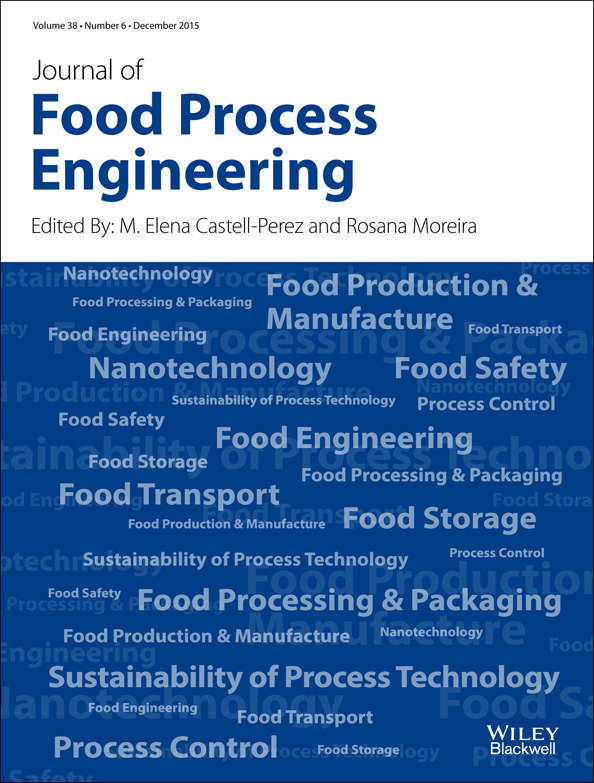Design of a Test Rig for Cleaning Studies and Evaluation of Laboratory-Scale Experiments Using Pink Guava Puree as a Fouling Deposit Model
Abstract
A cleaning-in-place (CIP) test rig is commonly used to investigate the cleanability of food apparatus. The main focus of this work was to design a laboratory-scale cleaning test rig that operates at a fluid velocity of up to 2 m/s (Re = 2.5 × 105) and that is capable of withstanding contact with detergents and disinfectants at temperatures from 20 to 70C. The design followed the standard design of a recirculating water tunnel that includes a test section. Computational fluid dynamic simulation was performed to find the minimum entry length to obtain fully developed flow at the test section. Cleanability of a flat stainless steel plate was investigated using pink guava puree as a physical fouling deposit model. The CIP process only considered the alkaline cleaning stage at cleaning condition of 0–2.0 wt % NaOH, 35–70C and 0.6–1.5 m/s. In general, removal of fouling deposit increased with increasing chemical concentration, temperature and velocity. These findings may be used to improve the CIP for real conditions in the food industry.
Practical Applications
Cleaning-in-place (CIP) process is a routine technique in food manufacturing industries to clean the surface of food process equipment and piping from fouling deposits and food residues from previous batch production. There is no standard CIP process that was formulated for all food industries. Short CIP process is favorable to food industries as food industries incur downtime when cleaning is performed. Thorough investigation of CIP performance on different fouling deposits is a must to obtain effective cleaning, and the rig enables this investigation to be carried out economically. Hence, this paper presents an innovative laboratory-scale cleaning test rig for fouling cleaning research. This rig was designed to closely mimic typical industry flow environment in food piping and has the capability to perform visual inspection. This rig can be used to find an economical CIP process of any food fouling deposits before any formulated process is being implemented at industry levels.




